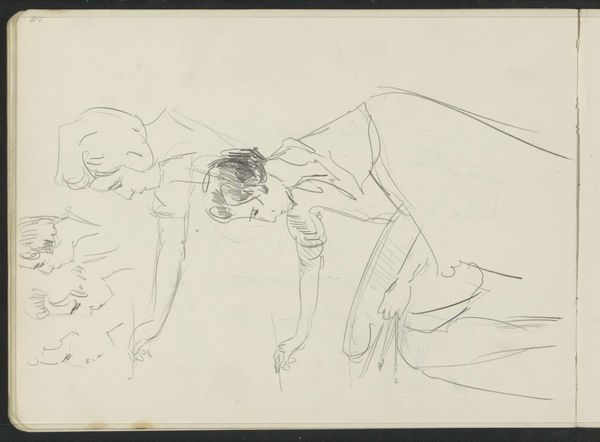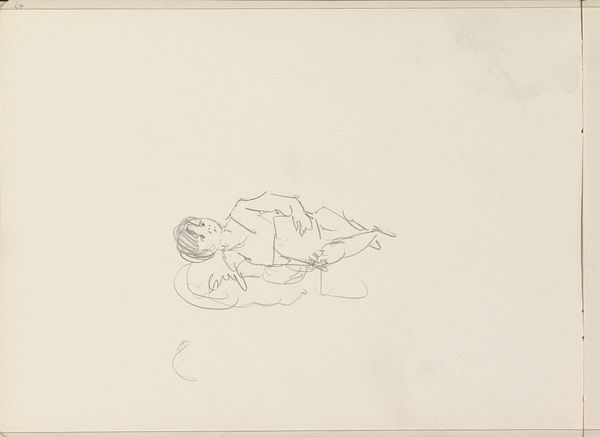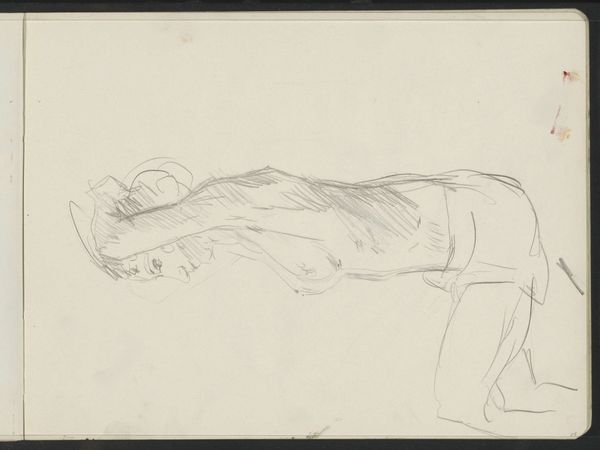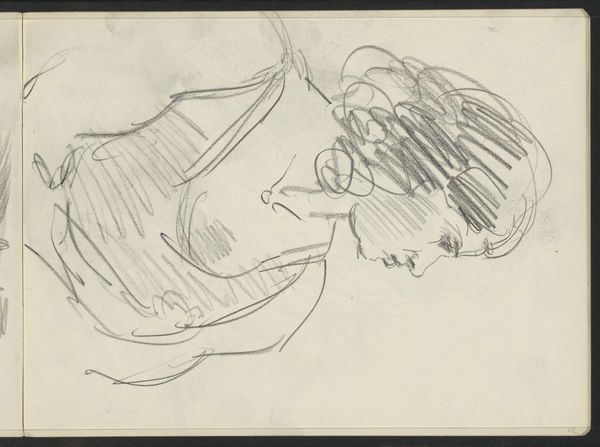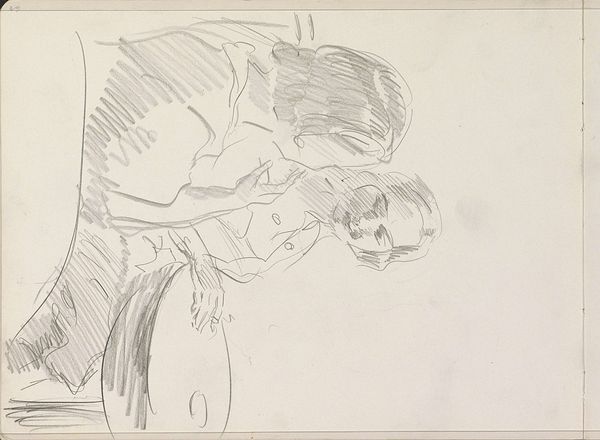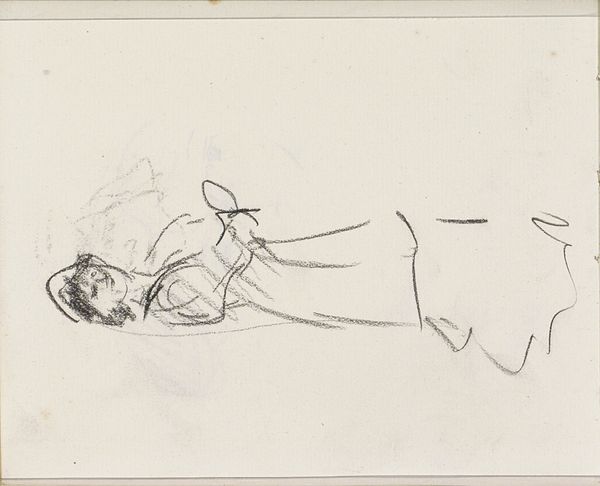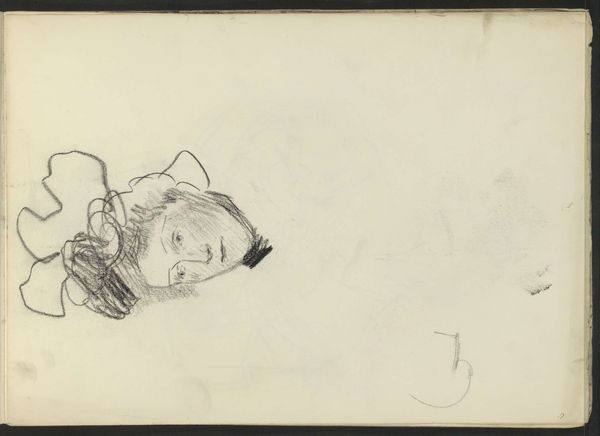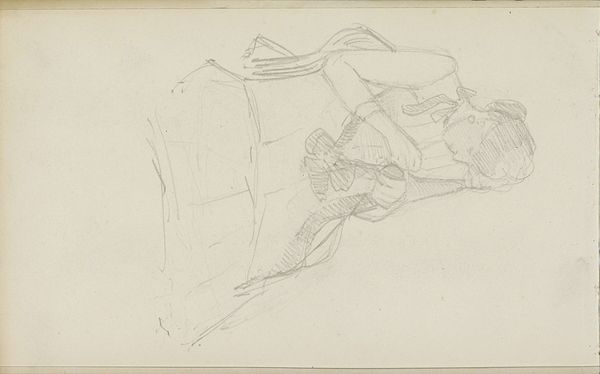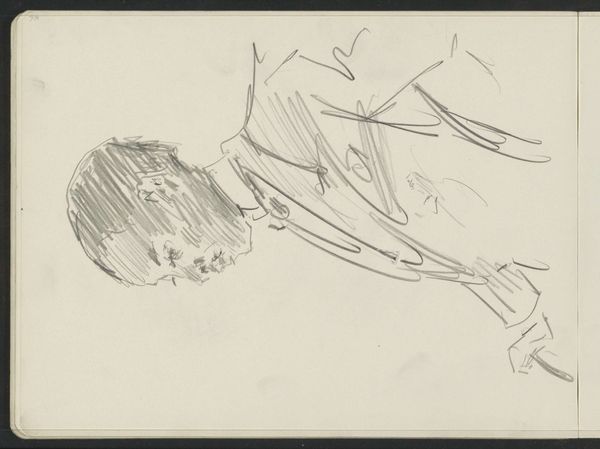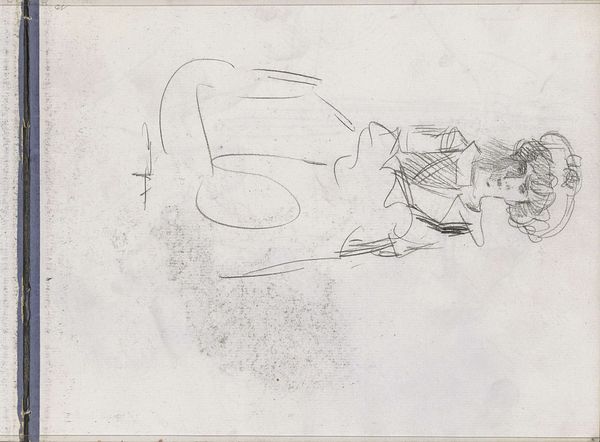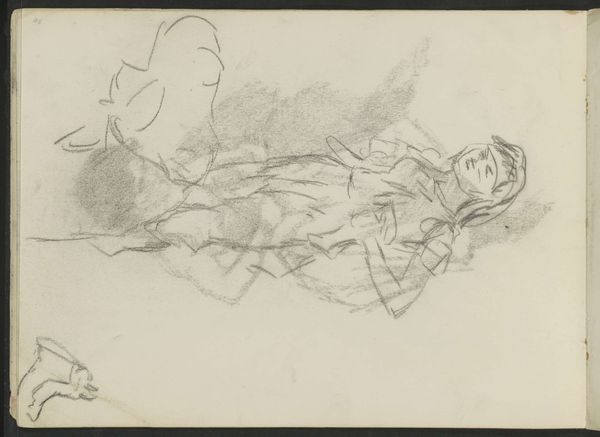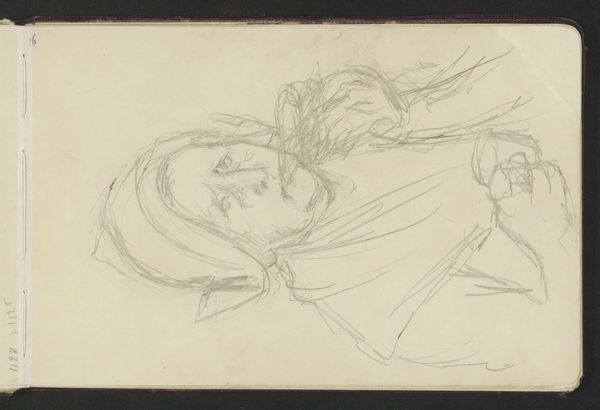
Copyright: Rijks Museum: Open Domain
Curator: This is a sketch titled "Vrouw met een baby op de arm," or "Woman with a baby in her arms," attributed to Isaac Israels and thought to have been created sometime between 1875 and 1934. Editor: The image, rendered in soft graphite, feels remarkably intimate. The loose, almost ephemeral quality captures a tenderness, don’t you think? Curator: Absolutely. It’s from a sketchbook, which lends itself to that sense of intimacy. Consider the artistic circles Israels frequented. He positioned himself amongst avant-garde circles which had their own established hierarchies of what constituted acceptable, 'finished' artworks. Sketchbooks were private reflections. Editor: The composition directs the viewer’s gaze downward, emphasizing the mother’s lowered gaze, the slight slump of her shoulders. The lines are deliberately vague, suggesting the ephemeral nature of a fleeting moment. It certainly highlights that tension between capturing reality and imbuing it with subjective feeling, as so much of impressionism did. Curator: I agree, and let’s also not forget the societal implications. During this period, depictions of motherhood became increasingly sentimentalized. While seemingly a candid snapshot, images like this subtly reinforced the domestic ideal and women’s roles. The sketch acts almost as a societal mirror, reflecting a dominant image of women during the artist's era. Editor: Perhaps. But the very sketch-like quality resists any sort of overtly sentimental reading for me. The lack of precise detail forces the viewer to engage their imagination, their memories of human tenderness. Curator: True, there is that element, however Israels had an understanding of how art impacts and molds society, it is difficult to disassociate it from those prevailing beliefs and biases of the time, especially given the artwork's popularity through different channels like reproduction in books and journals. Editor: Still, stripping away all socio-historical contexts, what remains is the intrinsic poignancy of captured lines and shadows. It's this quality which touches upon some universal emotion associated with the bonds of care. Curator: Perhaps we both find something to relate to, whether due to how it reminds us of a mother and child, or the era's view of a woman, as told by the strokes of Israels’ pencil. Editor: Well said. A poignant example of form mirroring feeling—or is it the other way around?
Comments
No comments
Be the first to comment and join the conversation on the ultimate creative platform.
